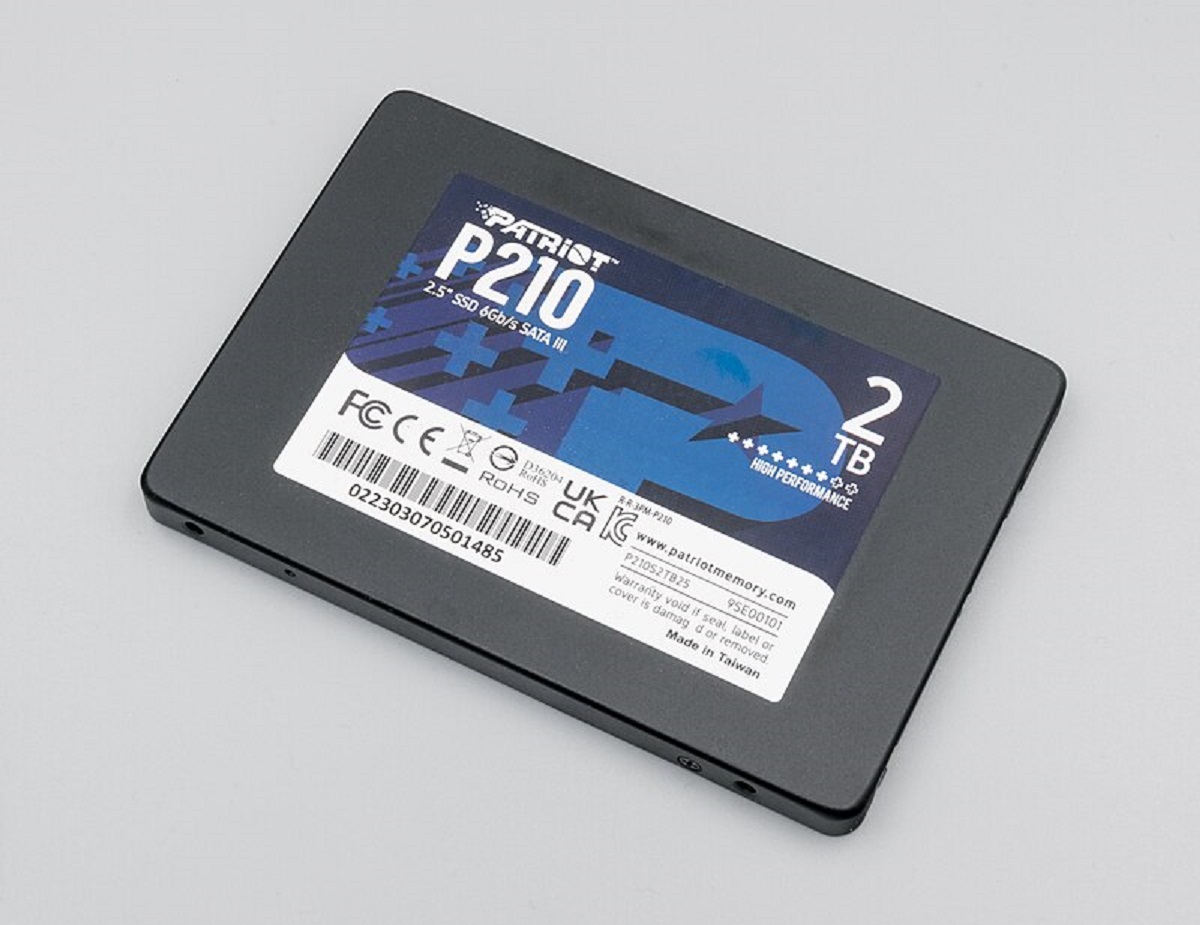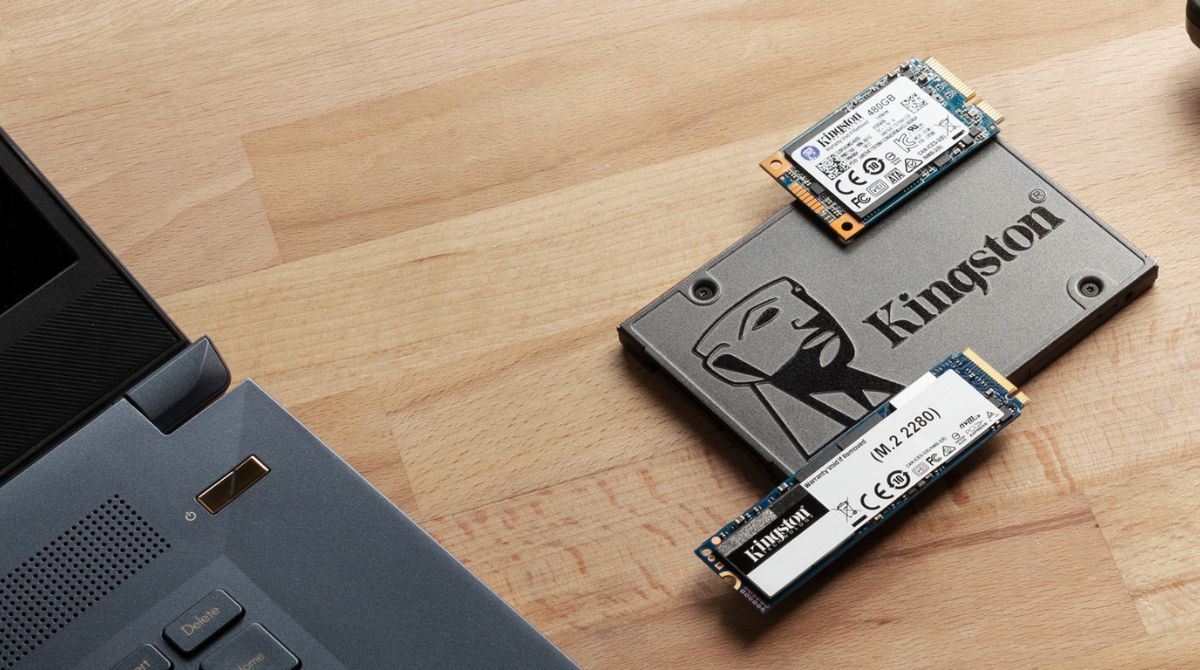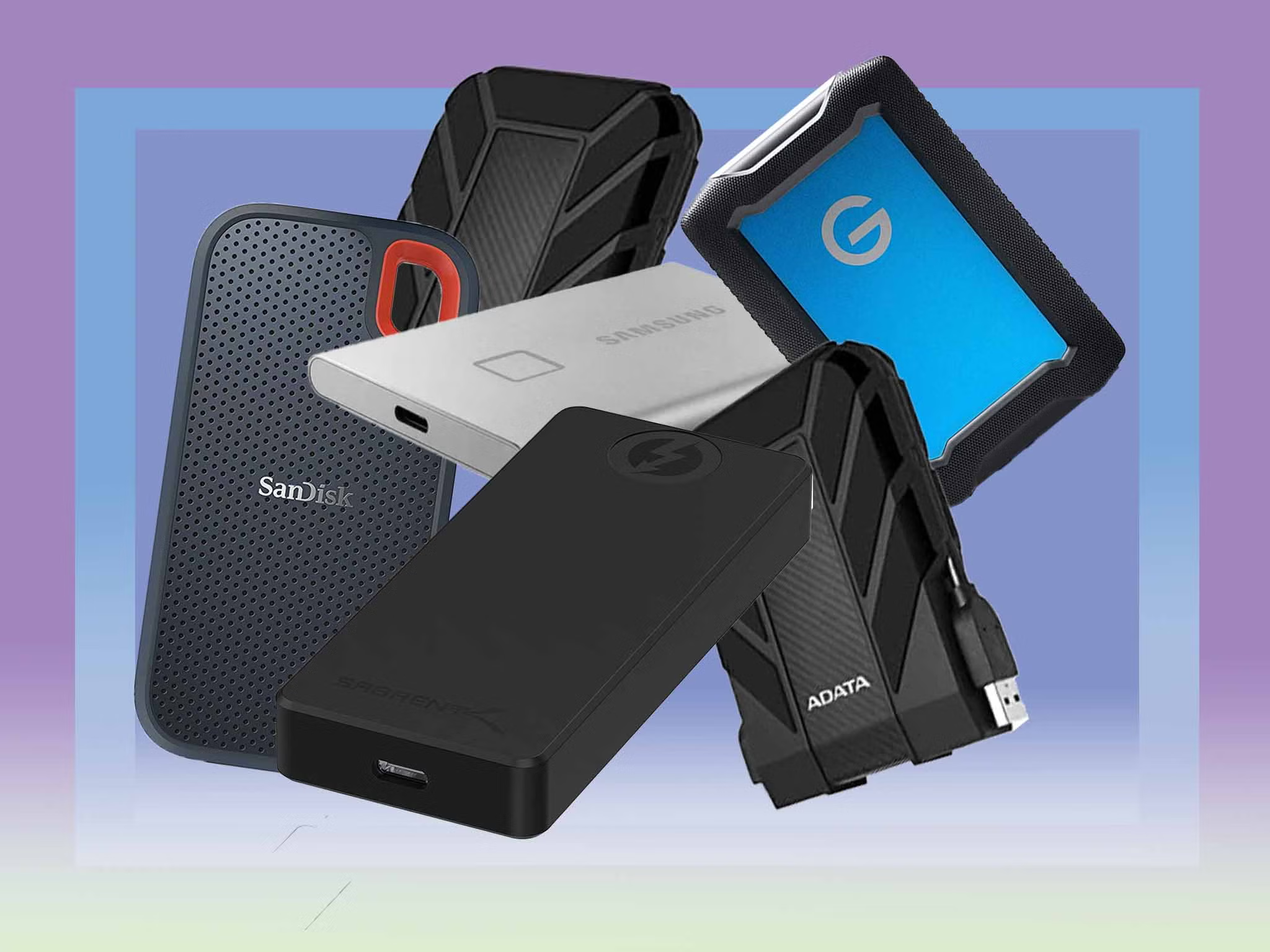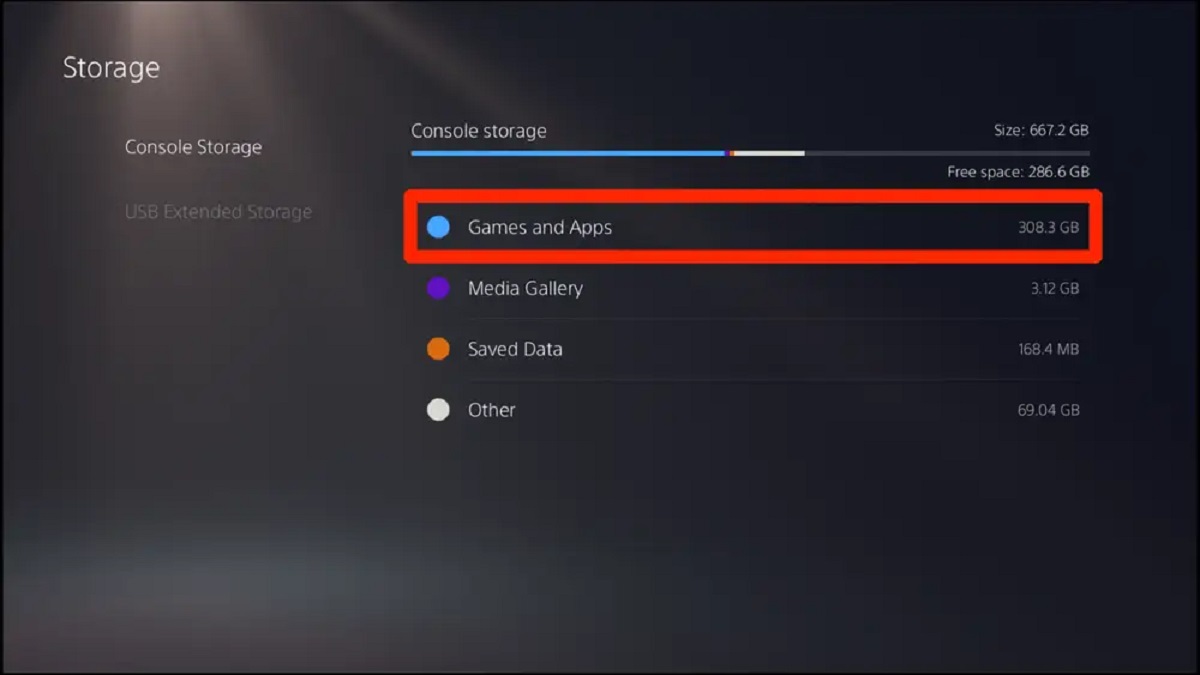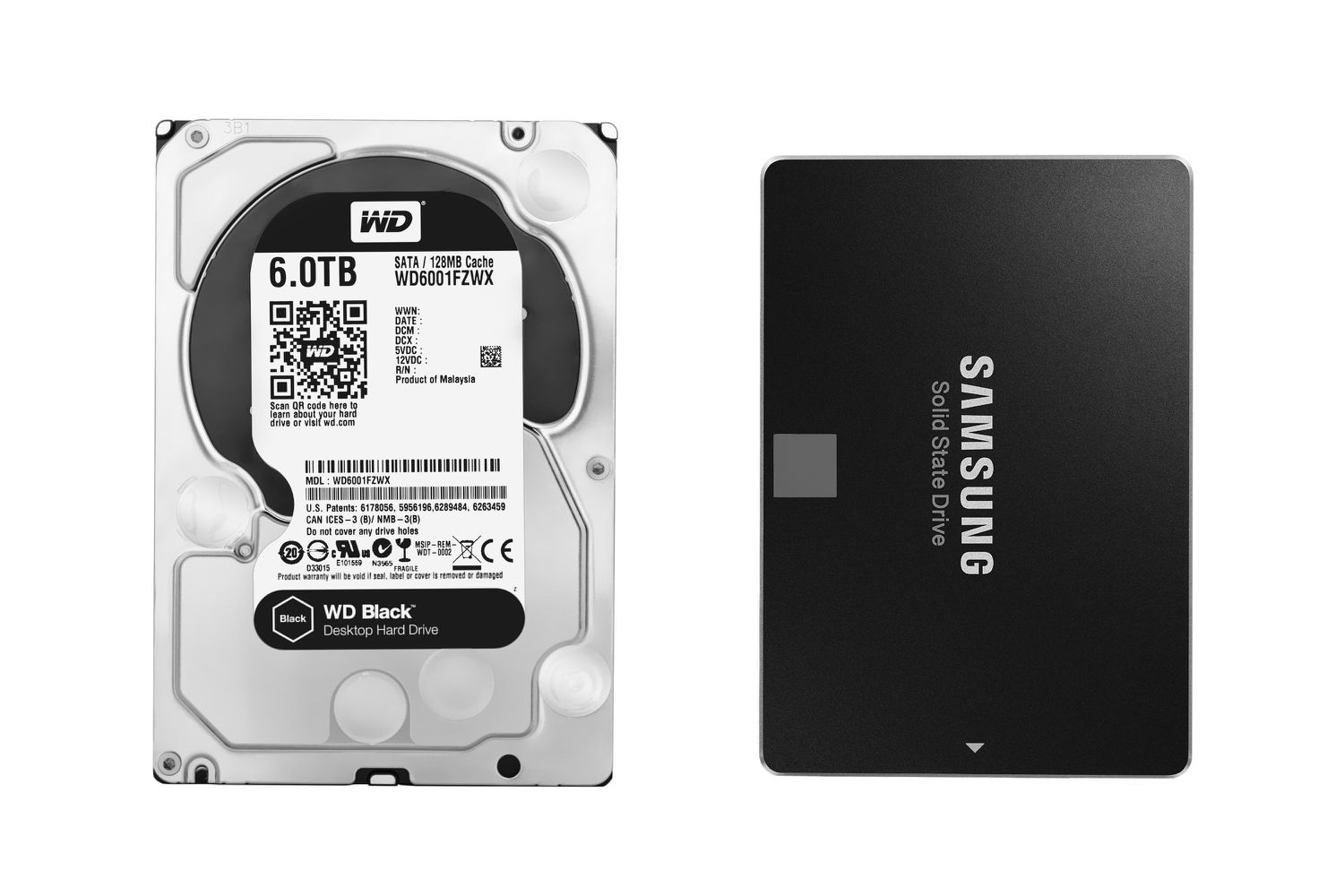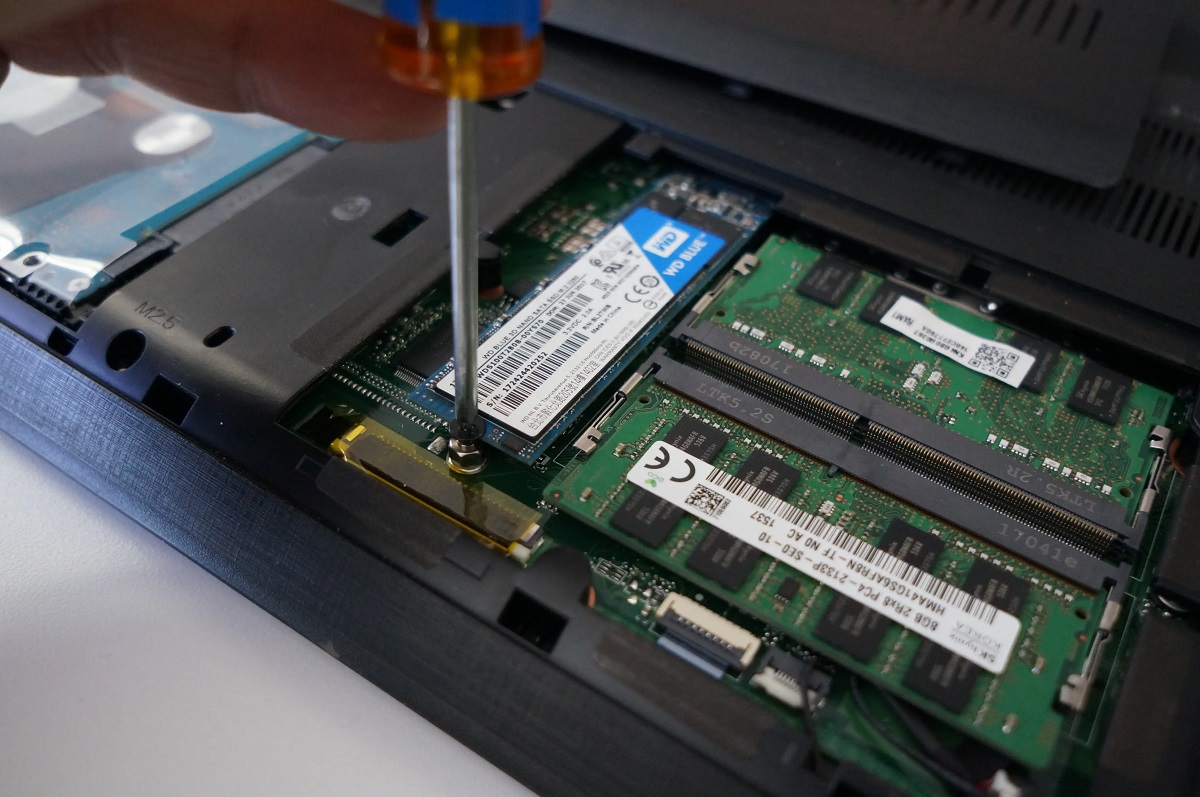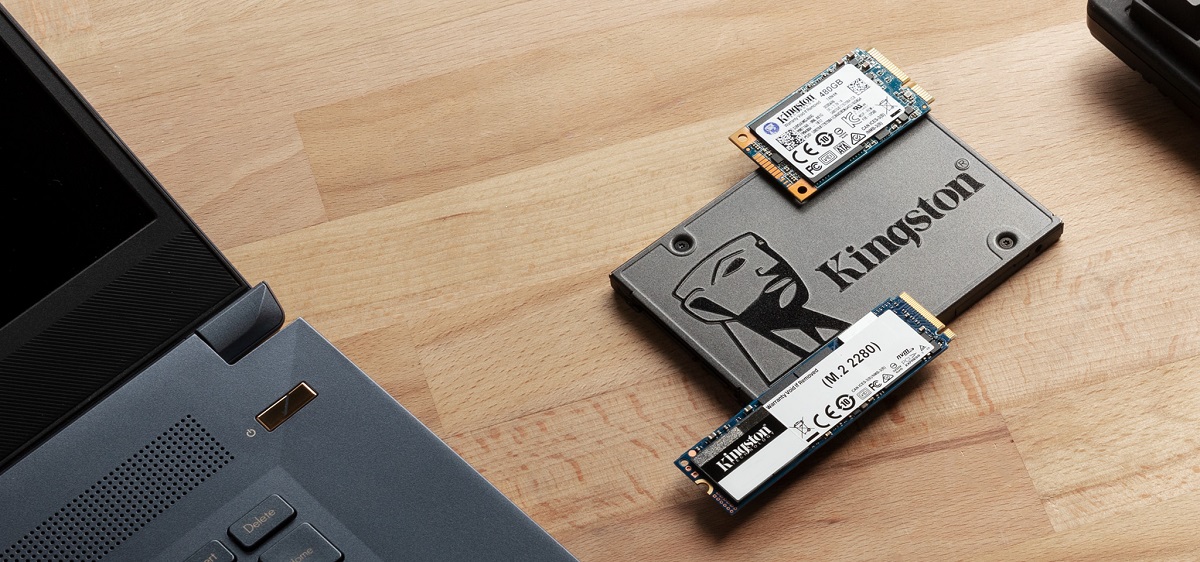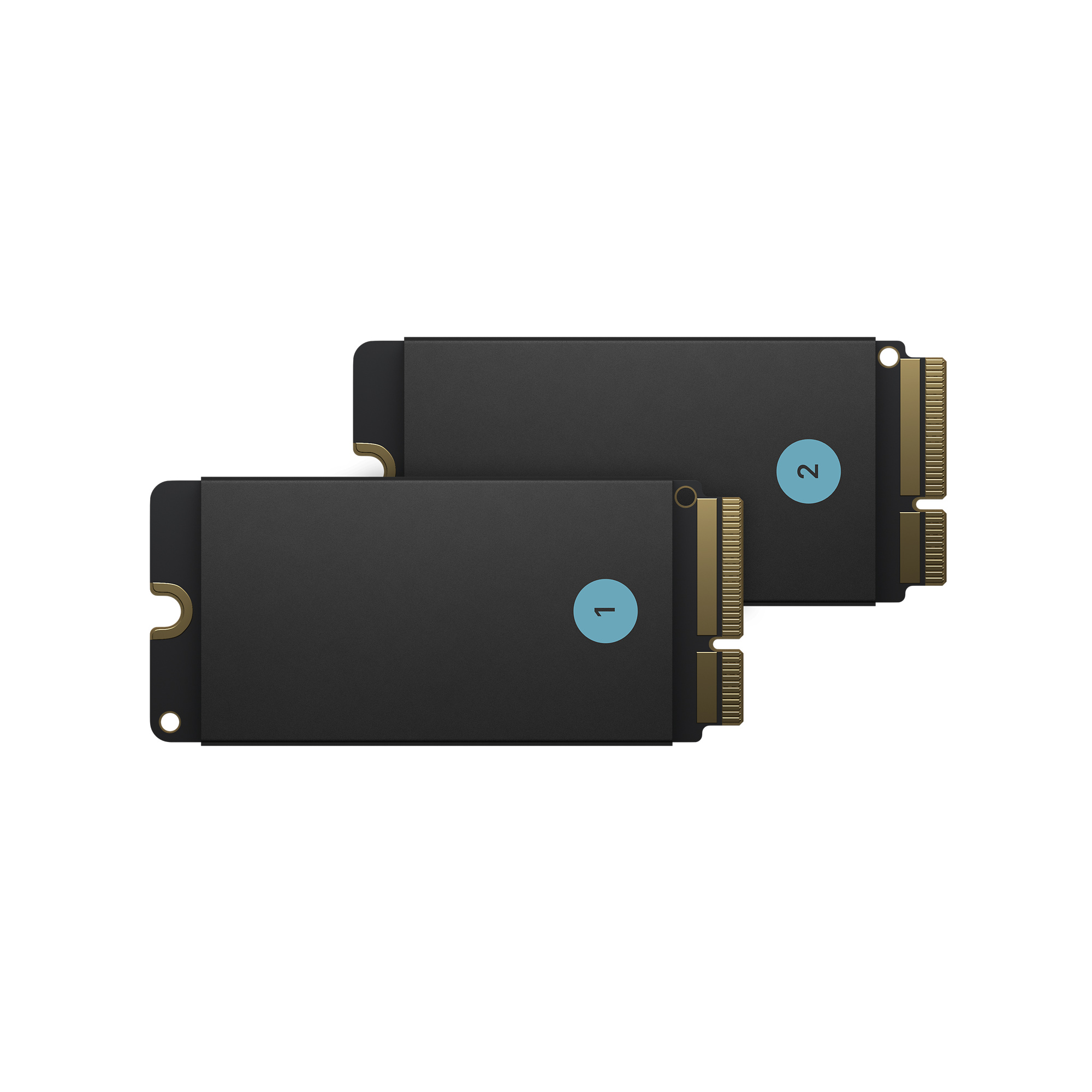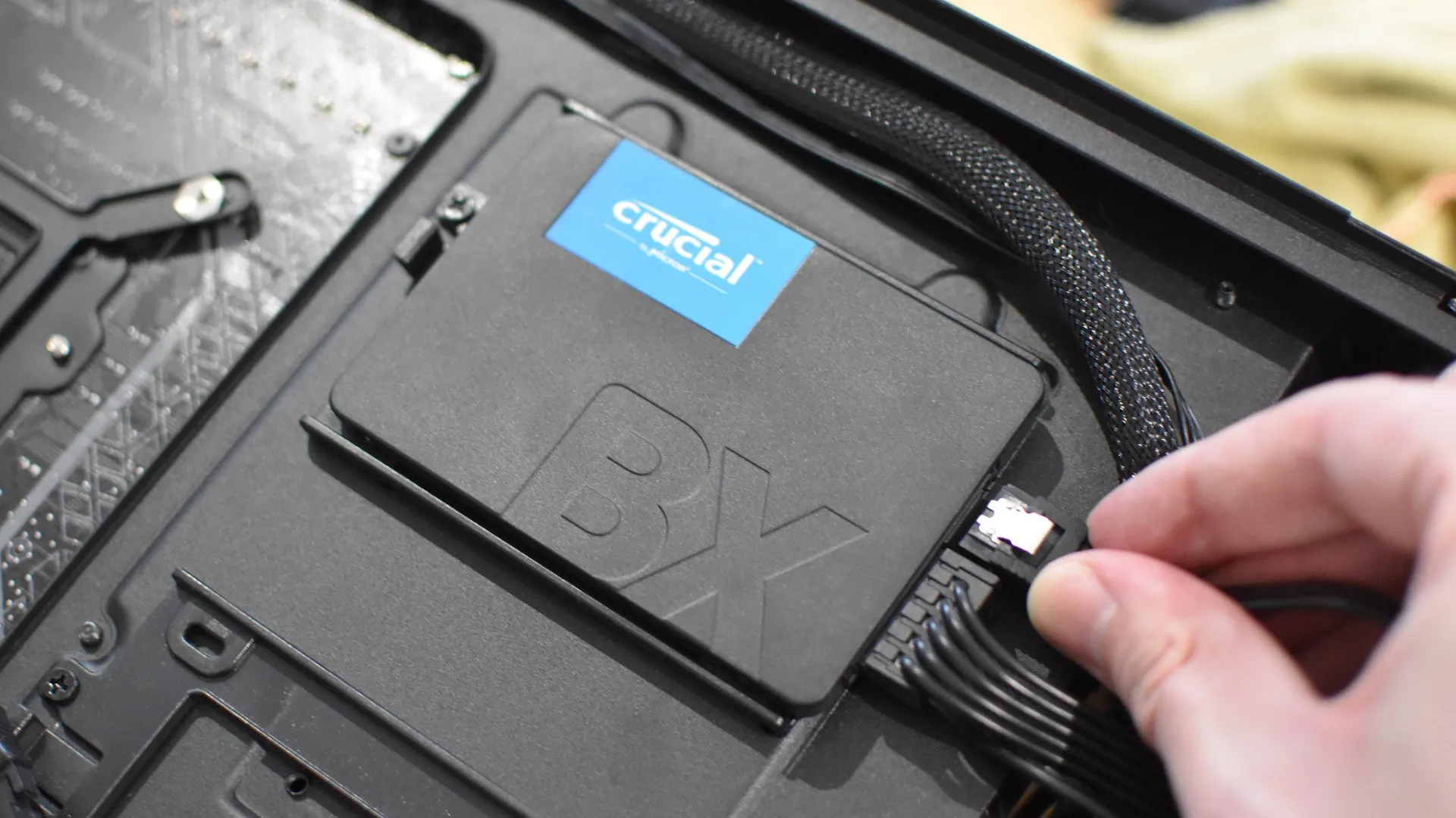Introduction
Welcome to the world of solid-state drives (SSDs)! If you’re in the market for a new storage solution, you may have come across SSDs as a popular and efficient alternative to traditional hard disk drives (HDDs). The increasing demand for faster and more reliable storage has made SSDs a popular choice for both casual users and professionals alike. But before you dive in and make a purchase, it’s important to understand the factors that affect the cost of SSDs.
SSDs are storage devices that use flash memory to store data, unlike HDDs that rely on spinning disks. This fundamental difference in technology translates to several advantages for SSDs, including faster read and write speeds, lower power consumption, and greater reliability. However, these benefits often come at a higher price compared to HDDs.
When considering the cost of an SSD, it’s essential to evaluate the specific factors that impact its price. These factors include storage capacity, speed, form factor, brand reputation, and specialized features. SSDs come in various capacities ranging from a few hundred gigabytes to several terabytes. Higher capacity drives tend to be more expensive, as they provide more storage space to accommodate your files and applications.
The speed of an SSD is determined by its interface and the type of flash memory used. The most common interfaces are SATA, PCIe, and NVMe. SATA SSDs offer relatively lower speeds but are more affordable, while PCIe and NVMe SSDs deliver blazing-fast performance at a premium price.
The physical form factor of an SSD also affects its cost. Standard SSDs come in two form factors: 2.5-inch drives that resemble traditional HDDs and M.2 drives that are smaller and more compact. M.2 drives often carry a higher price tag due to their smaller size and higher manufacturing costs.
Brand reputation plays a significant role in SSD pricing. Well-known brands with a proven track record of reliability and performance tend to charge a premium for their products. While these brands may offer additional features like improved endurance or longer warranty periods, they may not always be necessary for all users.
Lastly, specialized features such as hardware encryption, self-encryption, and advanced error correction algorithms can increase the cost of an SSD. These features are beneficial for users with specific security or data integrity requirements, but they may not be essential for everyone.
In the following sections, we’ll explore different categories of SSDs and delve deeper into their price points. Whether you’re looking for an entry-level SSD for everyday use or a high-end SSD for demanding tasks, we’ll help you find the best options that meet your needs and budget.
Understanding SSDs
Before delving into the cost of SSDs, it’s important to have a solid understanding of how they work and their benefits over traditional HDDs. As mentioned earlier, SSDs utilize flash memory technology instead of rotating disks to store data. This difference in technology brings about several advantages that make SSDs a compelling choice for many users.
One of the key benefits of SSDs is their blazing-fast read and write speeds. Unlike HDDs that rely on a mechanical arm to access data stored on rotating disks, SSDs have no moving parts and can access data almost instantaneously. This translates to significantly reduced boot times, faster application launches, and quicker file transfers.
Another advantage of SSDs is their lower power consumption. Since there are no mechanical components that need to be constantly powered, SSDs consume less energy than HDDs. This not only leads to lower energy bills but also longer battery life for laptops and portable devices.
Furthermore, SSDs are known for their exceptional durability and reliability. Without any moving parts, SSDs are less susceptible to mechanical failures that can occur in HDDs. They are also more resistant to shocks and vibrations, making them ideal for use in mobile devices and environments that are prone to physical impacts.
SSDs also offer a more efficient and silent computing experience. With their faster read and write speeds, tasks such as opening applications or transferring files become significantly quicker. Additionally, since SSDs don’t have moving parts, they operate silently, eliminating the noise and vibrations associated with HDDs.
Additionally, SSDs contribute to a cooler and more efficient system. Due to their lower power consumption and lack of moving parts, SSDs generate less heat compared to HDDs. This helps to maintain a cooler internal temperature, reducing the need for additional cooling mechanisms and contributing to a quieter overall system.
It’s important to note that while SSDs have numerous advantages, they also have some limitations. The most significant drawback is their higher cost per gigabyte compared to HDDs. However, as technology advances and manufacturing processes improve, the cost of SSDs continues to decline, making them more affordable for consumers.
Overall, SSDs offer a compelling alternative to traditional HDDs, providing significant performance benefits in terms of speed, power efficiency, durability, reliability, and silent operation. Understanding these advantages is crucial when considering the cost of SSDs, as their benefits can have a substantial impact on your computing experience.
Factors Affecting SSD Cost
Several factors come into play when determining the cost of solid-state drives (SSDs). Understanding these factors will help you make an informed decision when selecting an SSD that fits your needs and budget.
1. Storage Capacity: The storage capacity of an SSD is one of the primary factors influencing its cost. Higher capacity SSDs, such as those with terabytes of storage, generally command a higher price compared to lower capacity options. It’s essential to evaluate your storage requirements and consider how much space you actually need for your files, applications, and operating system.
2. Speed and Performance: The speed and performance of an SSD play a significant role in determining its cost. SSDs with faster read and write speeds, enabled by advanced interfaces like PCIe or NVMe, tend to be more expensive than those with slower speeds. If you require high-performance storage for demanding tasks like gaming or video editing, investing in a faster SSD might be worthwhile.
3. Form Factor: The physical form factor of an SSD can also impact its cost. Two common form factors for SSDs are the 2.5-inch drive, similar in size to traditional HDDs, and the smaller M.2 form factor. M.2 SSDs are typically more expensive due to their compact size and the manufacturing complexities associated with their construction. Choosing the right form factor depends on your device’s compatibility and the available space.
4. Brand Reputation: The reputation and brand of an SSD manufacturer can influence the cost. Well-known brands with a strong reputation for quality and reliability often price their SSDs at a premium. However, it is important to note that there are also reputable lesser-known brands that offer competitive prices without compromising on performance or reliability. Researching customer reviews and trusted sources can help you identify reliable brands at a more affordable price point.
5. Specialized Features: SSDs with specialized features, such as advanced encryption, enhanced endurance, or built-in error correction algorithms, may come with a higher price tag. These features cater to specific needs, such as enhanced data security or prolonged drive lifespan, and may be worth considering if you have specific requirements for your storage solution. However, it’s important to evaluate whether these features are necessary for your usage scenario, as they can add to the overall cost.
It’s worth noting that SSD prices have been steadily decreasing over the years due to advancements in technology and increased competition in the market. This means that you can now find affordable SSDs with excellent performance and reliability if you shop around and compare different options.
By considering the factors mentioned above and balancing your requirements with your budget, you can find an SSD that provides the right balance of storage capacity, speed, performance, and features without breaking the bank.
Entry-Level SSDs
Entry-level SSDs provide an affordable storage solution for everyday users who are looking to upgrade their systems or replace their existing hard drives. These SSDs offer a balance between price and performance, making them a popular choice for budget-conscious consumers.
In terms of storage capacity, entry-level SSDs typically range from 120GB to 500GB, providing enough space for storing the operating system, frequently used applications, and essential files. While this might be considered relatively small compared to higher capacity drives, it is often sufficient for everyday tasks and general usage.
Entry-level SSDs usually have SATA interfaces, which offer decent read and write speeds but are slower compared to more advanced interfaces like PCIe or NVMe. However, even with the SATA interface, entry-level SSDs still provide a significant improvement in performance compared to traditional hard drives.
When it comes to brand options, there are several reputable manufacturers offering entry-level SSDs, including Kingston, Crucial, Western Digital, and SanDisk. These brands have a solid reputation for providing reliable and cost-effective storage solutions.
In terms of price, entry-level SSDs are usually the most affordable category of solid-state drives. They offer a great balance between performance and cost, making them an excellent option for users looking to experience the benefits of SSDs without breaking the bank.
While entry-level SSDs may not have the same high-speed performance or advanced features as their more expensive counterparts, they still provide a significant boost in overall system responsiveness and faster application loading times compared to traditional hard drives. They are a great entry point for users on a budget or those who don’t require large amounts of storage space.
It’s essential to consider your specific needs and usage requirements before purchasing an entry-level SSD. If you primarily use your computer for web browsing, document editing, and casual multimedia consumption, an entry-level SSD will likely meet your needs and provide a noticeable improvement in performance.
Overall, entry-level SSDs offer an affordable and reliable storage solution for users who are looking to upgrade to solid-state drives without paying a premium price. They provide a substantial boost in performance compared to traditional hard drives and are an excellent entry point for users new to the world of SSDs or those with budget constraints.
Mid-Range SSDs
Mid-range SSDs offer a step up in performance and storage capacity compared to entry-level SSDs, making them a suitable choice for users who require more storage space and faster speeds without breaking the bank. These SSDs strike a balance between price and performance, catering to a wider range of users with varying needs.
In terms of storage capacity, mid-range SSDs typically offer capacities ranging from 500GB to 1TB. This increased storage space allows users to store a larger number of applications, files, and multimedia content, making them suitable for those who require more storage for their work or media collection.
Mid-range SSDs often leverage advanced interfaces like PCIe and NVMe to deliver faster read and write speeds compared to entry-level SSDs. These interfaces provide a significant boost in performance, resulting in quicker boot times, reduced application load times, and improved overall system responsiveness. The improved speeds make mid-range SSDs well-suited for gaming, media editing, and other demanding tasks.
Brands such as Samsung, Western Digital, Crucial, and Kingston offer a range of mid-range SSD options that strike a balance between affordability and performance. These brands often have a track record of delivering reliable and high-quality SSDs, providing users with a sense of confidence in their purchase.
In terms of price, mid-range SSDs are naturally more expensive compared to entry-level options due to their increased storage capacity and improved performance. However, they still offer good value for money, especially for users who require faster speeds and bigger storage space compared to entry-level SSDs. It’s important to consider your specific needs and budget to ensure that a mid-range SSD aligns with your requirements.
Mid-range SSDs make a compelling choice for users who need a balance between performance and price. Their increased storage capacity and improved speeds provide a significant boost in overall system performance without the need to invest in top-of-the-line SSDs.
Whether you’re a gamer, content creator, or power user who needs more substantial storage and faster speeds, opting for a mid-range SSD can deliver a noticeable improvement in your computing experience without stretching your budget too far.
Ultimately, mid-range SSDs offer a sweet spot for users who want an upgrade from entry-level options and need the additional storage space and performance capabilities without venturing into the high-end price range.
High-End SSDs
For users who demand the highest levels of performance and storage capacities, high-end SSDs offer the ultimate solution. These SSDs are designed for professionals, enthusiasts, and power users who require top-of-the-line performance for demanding tasks, such as gaming, video editing, and data-intensive workloads.
High-end SSDs often boast exceptional storage capacities, ranging from 1TB to several terabytes. This expansive storage space allows for the seamless storage and retrieval of large media files, applications, and project files, making them ideal for professionals who work with high-resolution videos, 3D modeling, and extensive databases.
These SSDs often feature cutting-edge interfaces like PCIe 4.0 and NVMe, delivering lightning-fast read and write speeds that transcend the limitations of SATA interfaces. With their superior performance, high-end SSDs allow for rapid data transfers, reduced loading times, and an overall highly responsive computing experience.
Brands such as Samsung, Western Digital, Corsair, and Seagate are prominent players in the high-end SSD market, known for their reliability, performance, and innovative features. These brands invest heavily in research and development to push the boundaries of SSD technology, resulting in state-of-the-art SSDs that cater to the most demanding users.
High-end SSDs, due to their advanced technology and superior performance, come with a higher price tag compared to entry-level and mid-range options. However, for professional users and enthusiasts who demand the best, the investment is often well worth it, as high-end SSDs can significantly enhance productivity and deliver an exceptional computing experience.
In addition to their impressive performance, high-end SSDs often come with additional features such as advanced error correction, higher endurance ratings, and improved power efficiency. These features are designed to provide additional reliability, data integrity, and optimal power management, ensuring that high-end SSDs deliver the utmost in performance and longevity.
Overall, high-end SSDs are specifically engineered to meet the demands of power users who require top-tier performance, massive storage capacities, and cutting-edge technology. While they may be more expensive, these SSDs deliver unparalleled performance and features that justify their premium price for those who require the best that the market has to offer.
If you are a professional content creator, a competitive gamer, or a user who simply wants the fastest and most robust storage solution available, investing in a high-end SSD will elevate your computing experience to new heights.
Specialized SSDs
Specialized SSDs cater to specific needs and use cases that go beyond the standard requirements of everyday users. These SSDs are designed with specialized features and functionalities to meet the demands of niche applications, industries, and specific user requirements.
One example of specialized SSDs is those tailored for enterprise and data center environments. These SSDs are optimized for high endurance, reliability, and consistent performance under heavy workloads. They often incorporate features such as power-loss protection, advanced error correction algorithms, and increased data protection mechanisms. These SSDs are ideal for businesses and organizations that rely on continuous data processing, large-scale data storage, and mission-critical applications.
Another type of specialized SSDs is those designed for gaming enthusiasts. Gaming SSDs are specifically optimized for fast loading times, minimal lag, and seamless gaming experiences. They often have high read and write speeds, low latency, and large storage capacities to accommodate extensive game libraries. Some gaming SSDs also come with RGB lighting and advanced heat dissipation mechanisms to enhance the overall gaming setup aesthetics and performance.
One of the emerging specialized SSD categories is secure and encrypted SSDs. These SSDs prioritize data security and protection. They feature advanced encryption technologies, such as hardware-level encryption or self-encryption drives (SED), to safeguard sensitive data stored on the drive. These are particularly useful for individuals and organizations that handle confidential or classified information and have strict security requirements.
Industrial and ruggedized SSDs are designed for use in harsh environments that experience extreme temperatures, vibrations, and shocks. These SSDs are built to withstand challenging conditions and offer increased durability and reliability. They are commonly used in industries such as transportation, aerospace, military, and manufacturing, where standard SSDs may not be able to withstand the demanding conditions.
Specialized SSDs also include niche products, such as SSDs for creative professionals that require fast and reliable storage for video editing, graphic design, and audio production. These SSDs often offer a balance between capacity and performance, enabling professionals to work with large files efficiently.
When considering specialized SSDs, it’s important to understand that their prices can vary significantly depending on the features, durability, and targeted industry or user requirements. These SSDs generally come at a premium price compared to consumer-grade options due to their specialized nature and advanced functionalities.
Before investing in a specialized SSD, carefully assess your specific needs and requirements to ensure it aligns with your usage scenario. It’s advisable to research the specific product’s capabilities and performance in relation to the intended application or industry to select the most suitable specialized SSD.
Specialized SSDs offer targeted solutions for users with unique demands, industries with specific requirements, and applications that require specialized performance characteristics. While they may be pricier than mainstream SSDs, specialized SSDs provide enhanced reliability, security, and performance that cater to those specific needs.
Finding the Best SSD Deals
When considering purchasing a solid-state drive (SSD), finding the best deals can help you save money while still getting a high-quality and reliable product. Here are some tips to help you find the best SSD deals:
1. Compare Prices: Begin by comparing prices from different retailers. Online marketplaces, electronics stores, and computer hardware retailers may have varying prices for the same SSD model. Utilize price comparison websites to quickly identify the best deals and discounts available.
2. Consider Storage Capacity: Determine the storage capacity you need and compare SSD deals based on that. SSDs with higher storage capacities generally come with higher price tags, so consider your requirements and strike a balance between capacity and cost.
3. Look for Sales and Promotions: Keep an eye out for sales events, holiday discounts, and promotional offers by retailers. These can significantly reduce the price of SSDs, allowing you to save money while still getting a high-performing drive.
4. Check Manufacturer Websites: Visit the official websites of SSD manufacturers. Some manufacturers offer exclusive online deals, discounts, or promotional codes that are not available through other retailers. This can be a great way to get a high-quality SSD at a discounted price.
5. Consider Refurbished or Open-Box SSDs: Refurbished or open-box SSDs can offer significant savings compared to buying brand new. These SSDs are often tested and certified by the manufacturer, ensuring their reliability and performance. However, be sure to read the product descriptions and warranty terms to understand the condition and coverage of these devices.
6. Read Customer Reviews: Before making a purchase, read customer reviews of the SSD model you’re interested in. Pay attention to both positive and negative reviews to get a better understanding of the product’s performance and reliability. This will help you make an informed decision and avoid potential issues.
7. Consider Bundled Deals: Some retailers offer bundled deals that include additional accessories or software with the SSD purchase. While these may not directly reduce the SSD’s cost, they can provide added value and savings if you need the bundled items.
8. Check for Warranty: Ensure that the SSD you’re considering comes with a warranty. A solid warranty can provide peace of mind and protect your investment in case of any defects or issues with the drive. Compare warranty periods and the support offered by different manufacturers to make an informed decision.
Remember that while finding a good deal is important, it’s equally vital to ensure the SSD you choose meets your requirements in terms of performance, reliability, and compatibility with your system. Take the time to research and compare different options to find the best balance of price and quality for your particular needs.
Conclusion
Choosing the right solid-state drive (SSD) involves considering various factors such as storage capacity, speed, form factor, brand reputation, and specialized features. Entry-level SSDs offer an affordable solution with decent performance for everyday users. Mid-range SSDs provide a balance between price and performance, catering to users who require faster speeds and larger storage capacities. High-end SSDs deliver top-of-the-line performance and expansive storage options for professionals and power users. Specialized SSDs serve specific needs and industries, offering features tailored to unique requirements.
In your search for the best SSD deals, comparing prices, considering storage capacity, and looking for sales and promotions can help you find cost-effective options. Additionally, checking manufacturer websites, considering refurbished or open-box SSDs, reading customer reviews, and considering bundled deals can enable you to save money while getting a reliable SSD that meets your needs.
It’s important to remember that SSDs provide significant performance improvements over traditional hard drives, offering faster read and write speeds, lower power consumption, enhanced durability, and silent operation. As technology advances and SSDs become more affordable, they are increasingly becoming the preferred choice for storage solutions.
Ultimately, the best SSD for you will depend on your specific requirements, budget, and intended usage. Whether you need an SSD for casual computing, professional work, gaming, or specialized applications, understanding the factors that affect SSD pricing and features will help you make an informed decision.
By considering factors such as storage capacity, speed, form factor, brand reputation, and specialized features, and utilizing the tips and strategies for finding the best SSD deals, you can ensure that you make a wise investment in a high-quality SSD that will significantly improve your computing experience.







